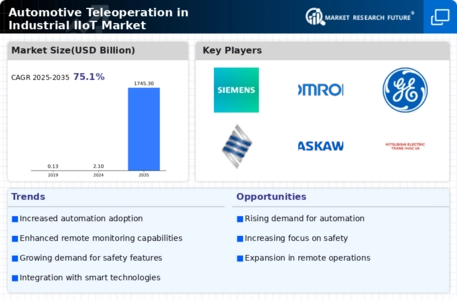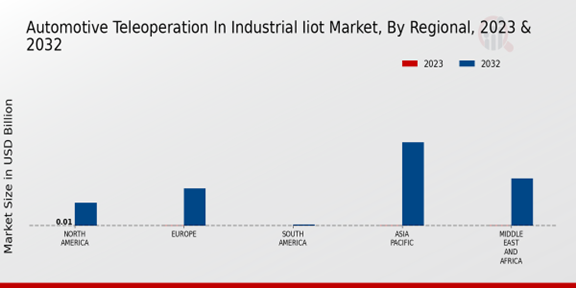Market Growth Projections
The Global Automotive Teleoperation in Industrial IIoT Market Industry is poised for substantial growth, with projections indicating a market value of 2.1 USD Billion in 2024 and an anticipated increase to 1745.3 USD Billion by 2035. This remarkable growth trajectory suggests a compound annual growth rate (CAGR) of 84.26% from 2025 to 2035, reflecting the increasing adoption of teleoperation technologies across various industrial sectors. The convergence of advancements in communication technologies, automation demands, and safety considerations are likely to drive this expansion, positioning teleoperation as a key component in the future of industrial operations.
Safety and Risk Mitigation
Safety concerns in industrial environments are driving the Global Automotive Teleoperation in Industrial IIoT Market Industry. Teleoperation allows operators to control vehicles from a safe distance, minimizing the risk of accidents and injuries associated with hazardous tasks. For instance, remote operation of heavy machinery in dangerous environments reduces the likelihood of human error and enhances overall workplace safety. As industries prioritize safety measures, the adoption of teleoperation technologies is expected to rise, further solidifying the market's growth potential. This focus on safety aligns with the projected market value of 1745.3 USD Billion by 2035, reflecting the increasing importance of risk mitigation strategies.
Increased Demand for Automation
The Global Automotive Teleoperation in Industrial IIoT Market Industry is witnessing a surge in demand for automation across various sectors, including manufacturing and logistics. Companies are increasingly adopting teleoperated vehicles to streamline operations, reduce labor costs, and enhance productivity. For example, teleoperated forklifts and delivery vehicles are being utilized to automate warehouse operations, leading to significant efficiency gains. This growing trend is projected to contribute to a compound annual growth rate (CAGR) of 84.26% from 2025 to 2035, indicating a strong market trajectory as businesses seek to leverage automation technologies for competitive advantage.
Rapid Technological Advancements
The Global Automotive Teleoperation in Industrial IIoT Market Industry experiences rapid technological advancements, particularly in communication technologies such as 5G and edge computing. These innovations facilitate real-time data transmission and processing, which are crucial for effective teleoperation. For instance, the integration of AI and machine learning enhances decision-making processes in remote vehicle operations, thereby improving efficiency and safety. As these technologies evolve, they are expected to drive the market's growth, contributing to an estimated value of 2.1 USD Billion in 2024. This trend indicates a robust foundation for future expansion as industries increasingly adopt teleoperation solutions.
Environmental Sustainability Initiatives
The Global Automotive Teleoperation in Industrial IIoT Market Industry is increasingly influenced by environmental sustainability initiatives. As industries strive to reduce their carbon footprint, teleoperated vehicles offer a viable solution by optimizing fuel consumption and minimizing emissions. For example, teleoperation can enhance route planning and vehicle efficiency, leading to lower energy usage. This alignment with sustainability goals is becoming a critical factor for companies aiming to meet regulatory requirements and consumer expectations. As a result, the market is expected to expand as more organizations adopt teleoperation technologies to support their environmental objectives.
Cost Efficiency and Resource Optimization
Cost efficiency is a pivotal driver in the Global Automotive Teleoperation in Industrial IIoT Market Industry. By utilizing teleoperation, companies can optimize resource allocation and reduce operational costs associated with traditional vehicle operation. For instance, teleoperated vehicles can operate in multiple shifts without the need for continuous human presence, thereby lowering labor costs. Additionally, the ability to monitor and control vehicles remotely allows for better maintenance scheduling, reducing downtime and repair costs. This financial incentive is likely to propel market growth, as organizations increasingly recognize the value of integrating teleoperation into their operational frameworks.

























Leave a Comment